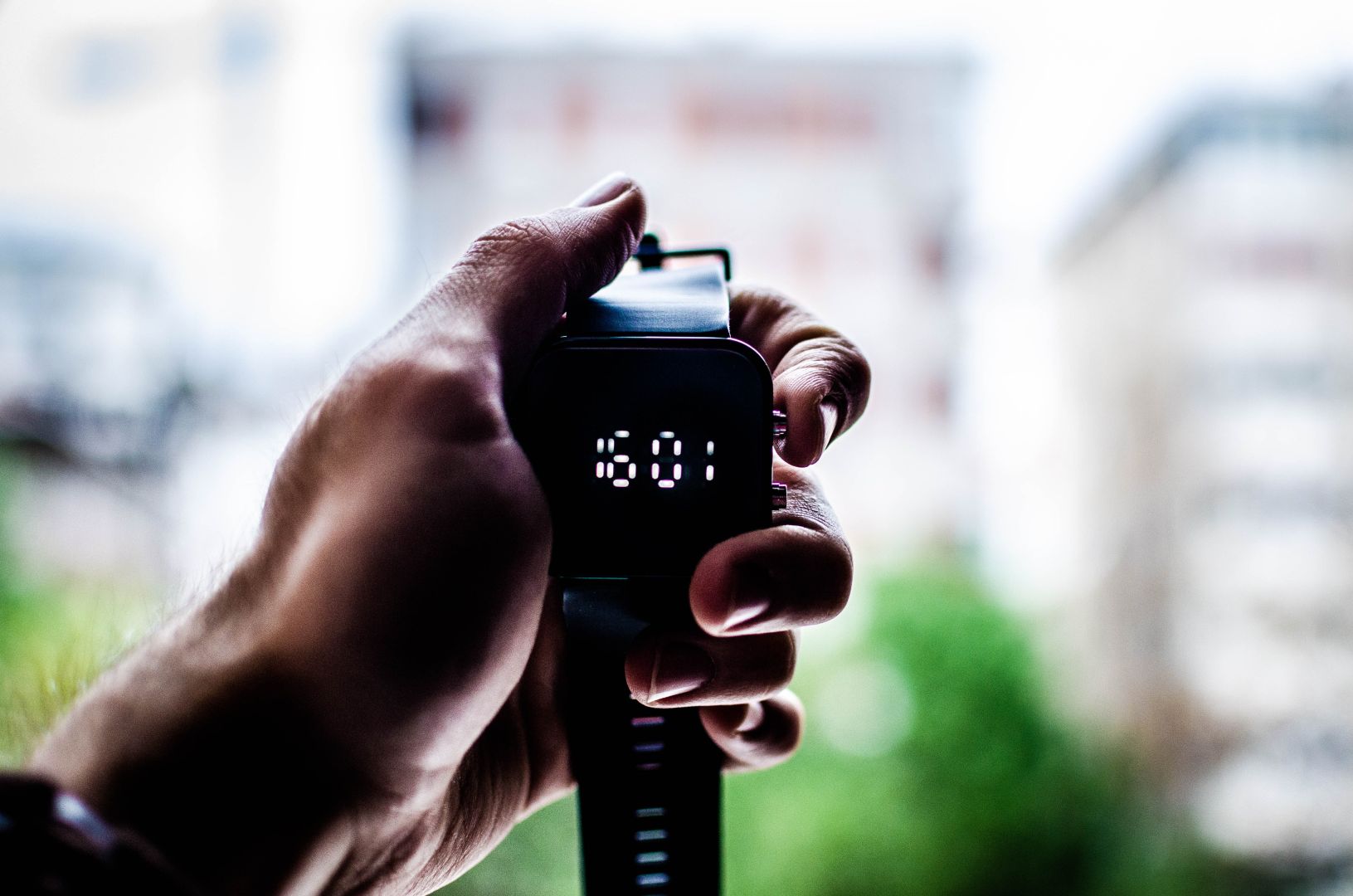
A fitness smartwatch helps you during all your workouts. No matter what kind of sport it is. With a fitness smartwatch, not only your pulse can be monitored, but also your traveled path, because usually a GPS receiver is integrated.
While a lot of smartwatches for fitness are in a gender neutral design, some versions are more suited for men, while others are usually used by women.
In this article
The design of a fitness smartwatch
The buyer of a sports watch has the choice of many different designs. For example, there are models on the market that look very similar to a classic wristwatch. However, futuristic-looking items are also available. These are usually equipped with a rectangular screen, which stands for an unusual and modern appearance. The only component of a sports watch that looks similar in all models is the wristband. This is always based on a conventional wristwatch and is usually made of natural rubber or silicone. These materials have the advantage of being very robust and resistant. Furthermore, they have a comparatively low weight and are very comfortable to wear. Even with damp skin, a successful hold around the wrist is always given. A leather wristband can only be found on a few models. This material is certainly suitable, but it is less hygienic than a bracelet made of rubber. The durability of leather is also somewhat lower.
The display of a sports watch
Fitness smartwatches are all equipped with an electronic screen, on which all sorts of information is displayed. However, here manufacturers use different technologies and sizes, which bring different advantages.
On simple sports watches, most manufacturers use a single-color display. For many users, this can be quite sufficient, but a color screen is much more attractive. All current sports watches use such an element. When it comes to display technology, however, manufacturers use different variants. LCD technology is very often used. Such a display comes with very natural colors, appealing contrasts and a very high luminosity. Alternatively, more and more manufacturers also use AMOLED displays. This convinces the wearer with a comparatively low battery consumption.
In terms of design and size, many sports watches differ. Thus, a round screen is used again and again. This makes for an appealing look, but the display of information is usually not ideally structured. If you place a lot of value on seeing everything important at a glance, you should go for a rectangular model. Such a model usually comes with a futuristic appearance. The size of the display mainly depends on the user’s preferences. The smallest ones offer a screen diagonal of 1 inch, while the largest ones come with 2 inches.
The inside of a fitness watch
The heart of any fitness smartwatch is not the appearance, but rather what’s inside. Here, manufacturers use numerous novel technologies so that fitness watches are equipped with really great and practical features.
One feature that all fitness smartwatches have in common is the pedometer. For this, two sensors were installed inside the devices, which can perceive different movements of the arm. Thus, these components distinguish between a linear acceleration and a lateral movement of the arm. Using this information, the software of the Sport Watch creates a virtual movement image. This is used to determine whether the movement of the arm was due to a step or whether it was just an everyday arm movement. Thanks to this new type of sensor technology, counting steps is considerably more accurate; only steps that have actually been taken are recorded.
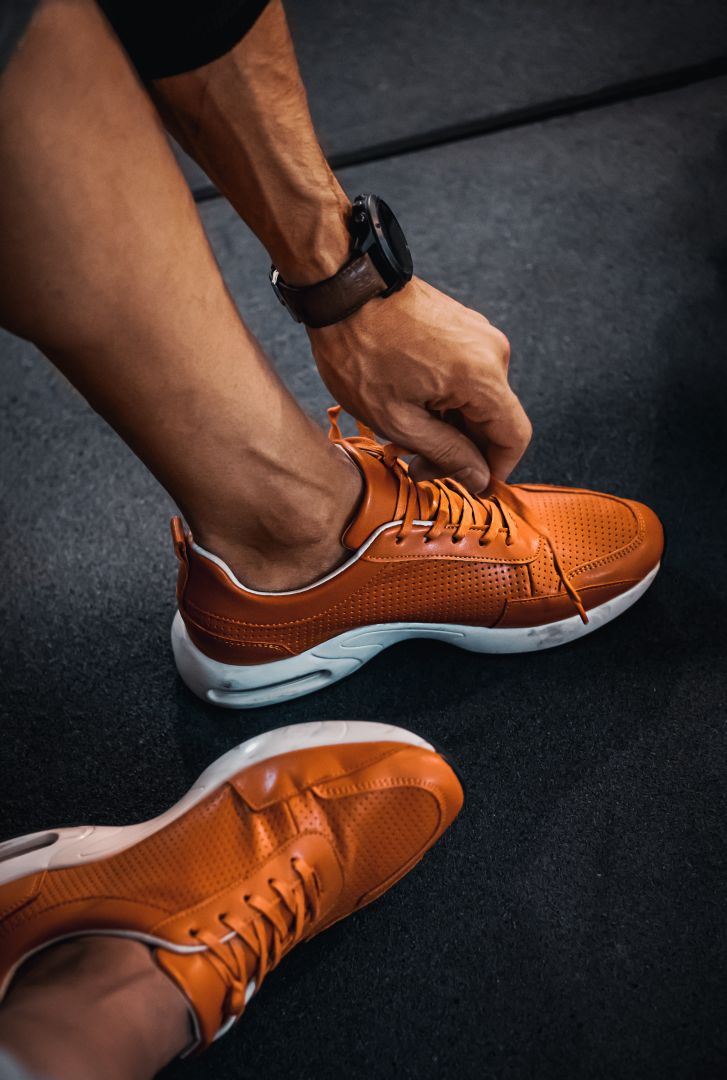
Of course, a pedometer cannot be used for cycling or swimming. For this reason, manyfitness smartwatch manufacturers equip their products with a GPS receiver. Thanks to this component, all movements can be recorded exactly. Among other things, this also makes it possible to save the exact route. After training, this can be tracked on a PC or smartphone. Particularly high-quality articles even offer integrated navigation, so that a navigation system or route calculation on the smartphone can be dispensed with.
In addition to these sensors, an altimeter is always integrated into a watch for sports. This is particularly advantageous for cyclists and mountaineers. In these sports, the altitude meters are often decisive for the intensity and difficulty of the training.
The pulse measurement on modern sports watches
A sports watch should always have a function that measures the current heart rate. For this purpose, different techniques are used in the current models.
In the case of inexpensive watches intended for amateur athletes, manufacturers install sensors on the inside of the wristband. These usually measure the current pulse by means of a light beam. The advantage of this variant is its high level of convenience. No other utensil has to be worn on the body. Such fitness smartwatches also have a long battery life, since this measurement technology requires very little power. The disadvantage, however, is the comparatively low accuracy. Large deviations are possible here, so that a determination of the pulse in this way is only recommended for occasional athletes.
On the other hand, if you have an ambitious approach to sports, you need a very precise measurement. Only then is it possible to control the training in a targeted manner and to recognize the different pulse ranges. Precise measurement is always achieved by means of a chest strap. As the name suggests, this is worn around the chest. Here, the heartbeat is measured ECG-accurately, so that very exact data is obtained.
The disadvantage of this variant, however, is that the heart rate belt must always be worn during sports. Partly this can be perceived as annoying. The battery life of the watch is also somewhat shorter when using a chest strap, since a connection with the sensor must always be established.
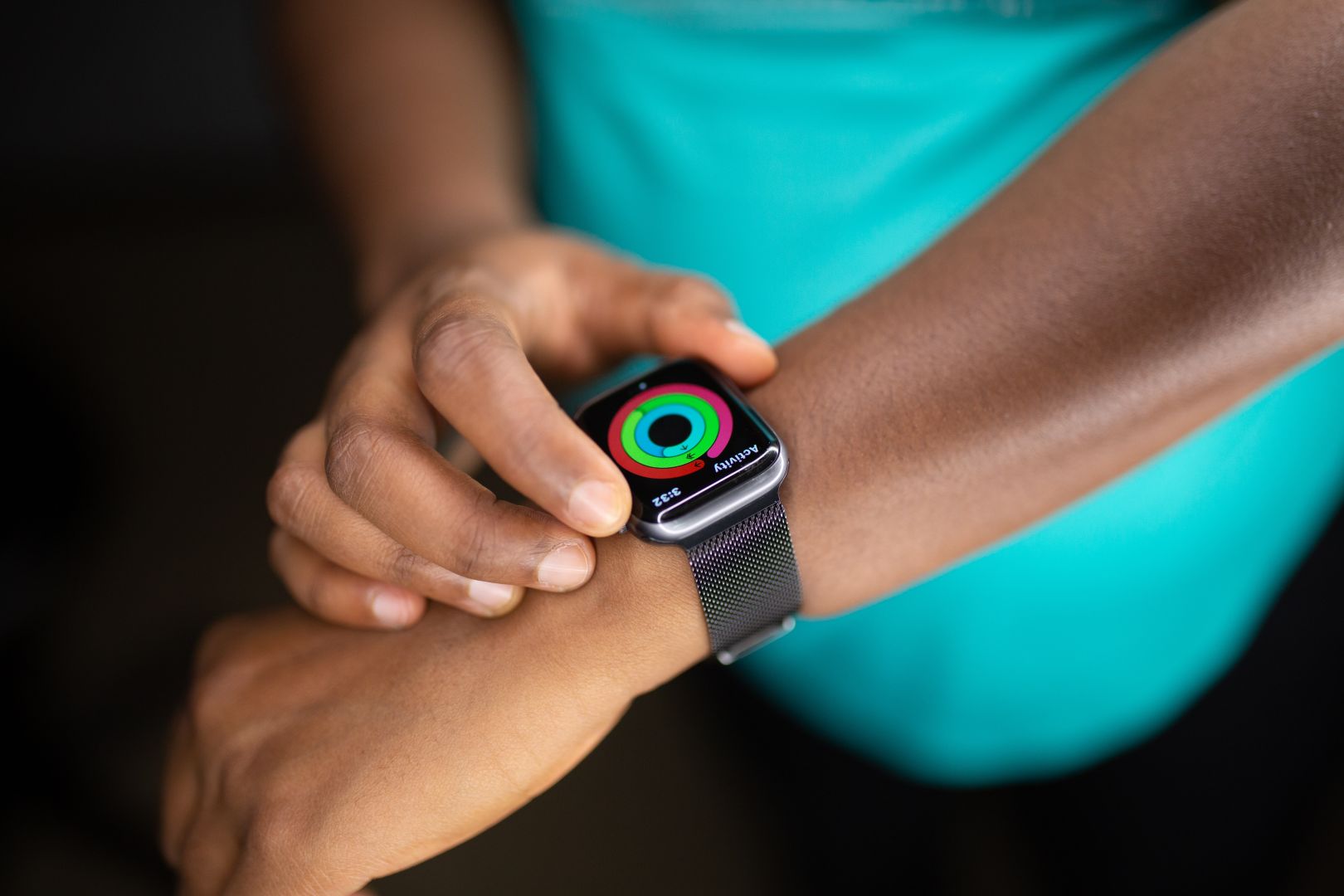
The connection to the computer
Every ambitious athlete should evaluate and document the training data. For this to succeed, the fitness smartwatch must be connected to the computer or smartphone. Connectivity with the latter is usually achieved via Bluetooth. Often, the manufacturers also offer suitable apps. This allows the training data to be analyzed well. Alternatively, a modern watch for sports can also be connected to the computer more and more often. A USB cable is used for this purpose, and all collected information can be retrieved on the computer.
The battery life of a modern watch for sports
Inside a watch that has been optimized for training, you will find all sorts of technology. These components are always active during sports and naturally consume power. Nevertheless, the battery life of a high-quality model can be quite sufficient for many hours of training. Often, more than 20 hours can be achieved. In standby mode, the battery life is even considerably longer. Several days are possible with any training watch. The built-in screen is always dependent on the battery life.
If you not only want to log your training, but also evaluate it successfully, you can’t avoid buying a fitness smartwatch. Due to new technologies, stylish designs and increasingly durable batteries, the runtime is at a high level, so that the smart watches can also be worn in everyday life.
Decision-making
The wearables market – which primarily includes smartwatches, fitness bracelets and fitness smartwatches – is experiencing strong and continuous growth. As a consequence, the range of products is also increasing, which of course gives the potential buyer both advantages and disadvantages. On the one hand, he can choose from a huge range of devices and a wide price range. On the other hand, this surplus ultimately also causes confusion or disorientation.
Especially those who want to buy a fitness smartwatch face a real challenge. There are countless models designed for the most common sports, such as running, cycling and training in the gym. And then there are very specialized products dedicated to what can rather be called fringe sports. Even divers, anglers and climbers can now count on a small personal assistant on their wrist to accompany them during their training. To give you a first insight into what fitness smartwatches are capable of and what to consider when buying one, here is a small guide.
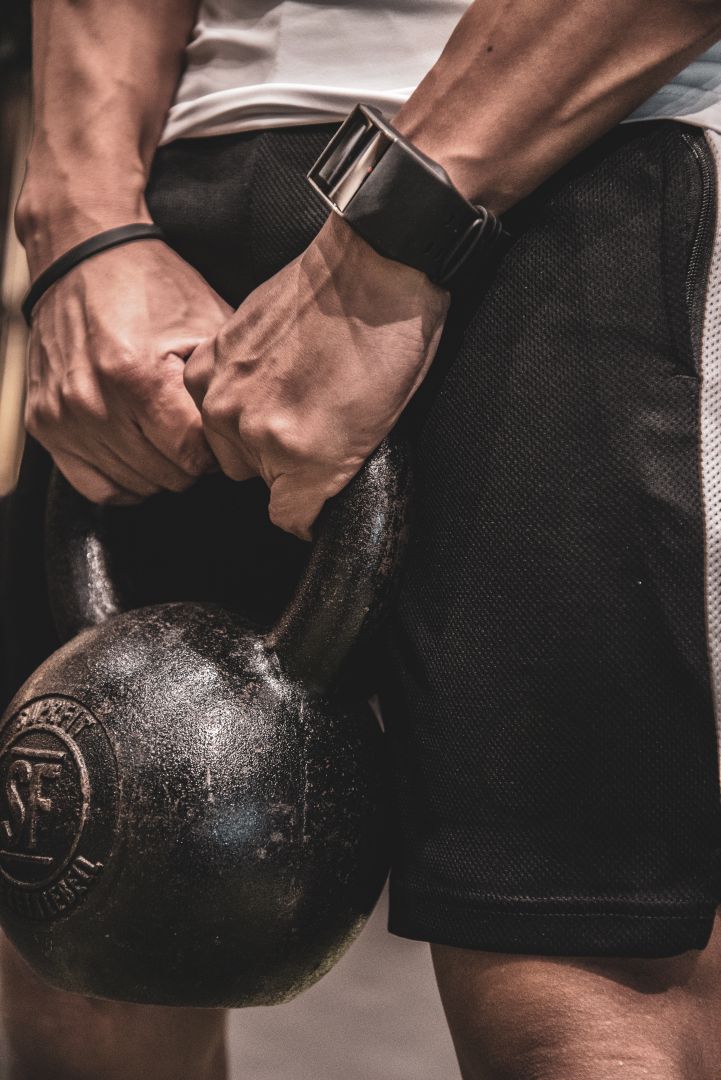
Basic
A fitness smartwatch – be it from the well-known manufacturers like Fitbit, Polar, TomTom or Garmin or from a more unknown brand – is a complex device. When it comes to wearables, it is probably the wrist assistant that has the most capability. After all, afitness smartwatch is, to put it simply, a mixture of a smartwatch and a fitness wristband. In other words, it combines sporty features with the tasks of a smart watch.
Accordingly, it must be able to inform its wearer about notifications and calls from a paired smartphone. Furthermore, it can serve as a timer, access to the Internet or even as a navigation system. And then, in addition to basic sports functions like a pedometer, sleep monitoring, and calorie measurement, very special extras are to be expected from it. These depend on the intended discipline and can, for example, take the form of a compass for hikers or a warning of weather changes for extreme athletes and sailors.
At the same time, there are big differences when it comes to design. Those who primarily want to use their fitness smartwatch for sporting activities in nature can expect a very robust look here, while golfers tend to fall back on very classic models whose look is more reminiscent of a luxury watch than a sporty wearable.
All-rounder fitness smartwatches
In principle, fitness smartwatches can be distinguished between very specific models and all-rounders. The latter product category is characterized by the fact that they support the widest possible range of sports. These are often the most common activities such as hiking, running, cycling or even swimming. The respective fitness smartwatch achieves this by having automatic activity recognition. For example, the Swiss company Garmin has installed the so-called Move IQ feature in its trackers. The device automatically registers the wearer’s activity based on typical movements.
Standard functions such as counting calories burned, recording steps taken every day, and monitoring sleep including the division into deep and light sleep phases are also often found.
An optical heart rate monitor is often integrated as well, which continuously keeps an eye on the wearer’s pulse. A chest strap no longer needs to be worn, because this technology has now reached the stage where it provides reliable data. In the meantime, pulse measurement has become established in most fitness watches, as it not only provides an important parameter for health data, but at the same time the amount of calories burned can be determined more precisely.
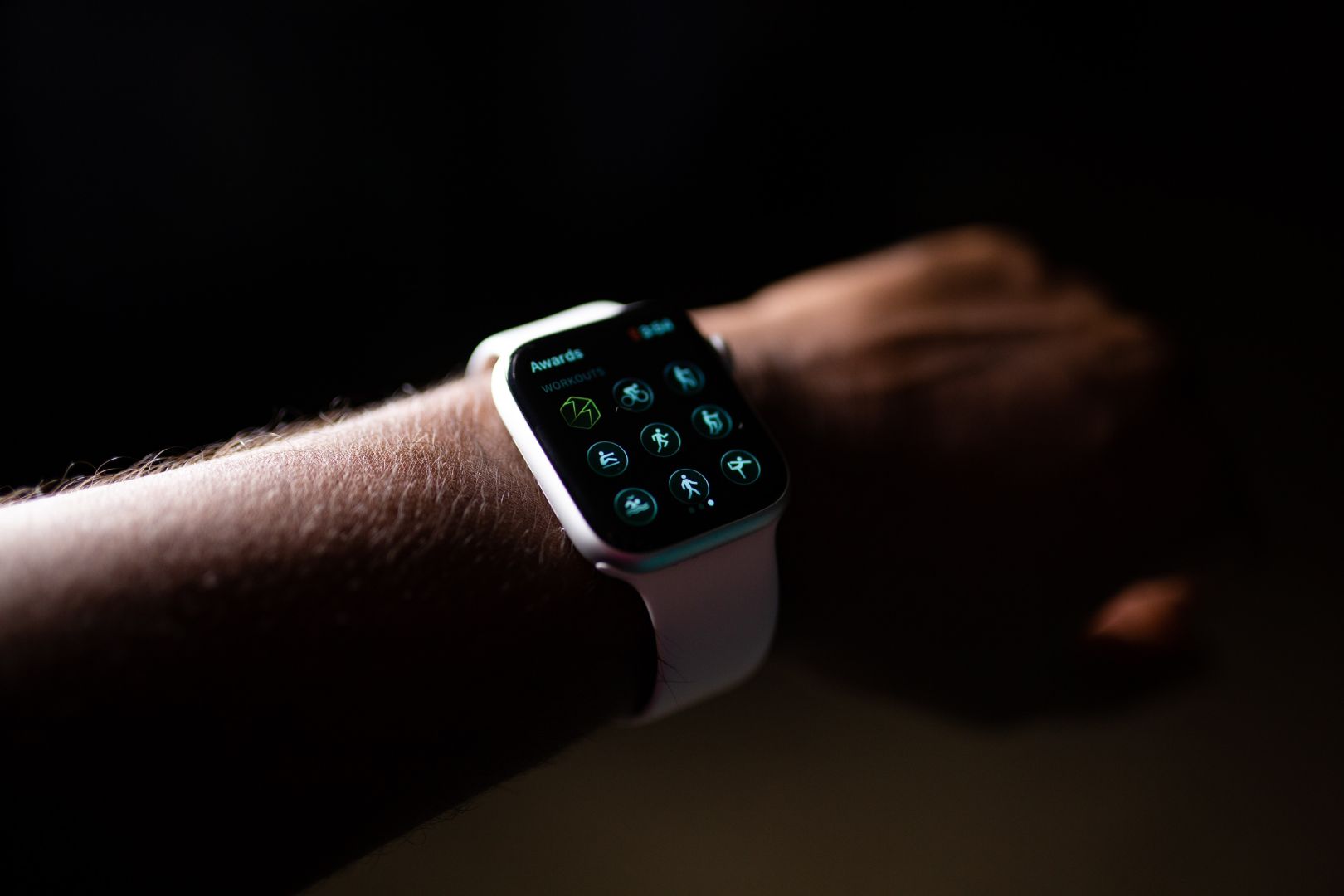
Specific Fitness Watches
What the all-round fitness smartwatches are able to do, that also have the specific models in stock. However, they are still characterized by a kind of unique selling proposition. They serve at the same time one or more marginal sports, which are covered by a rather small amount of models on the market.
An example of this is the Nixon Mission fitness smartwatch, released in the fall of 2016, which is aimed at outdoor sports such as snowboarding or sailing. It works together with various information systems, providing its wearer with data relevant to their activity. Surfers, for example, will find out what the swell is like, and winter sports enthusiasts will be told in good time what the prevailing snow conditions are. It can also be used for diving, as it is the first fitness smartwatch with Android Wear to withstand water depths of up to 100 meters.
In addition, golf watches are becoming increasingly popular. Their specific feature is that they have a large memory of golf courses. The corresponding map material can be called up in advance, so that the golfer is spared the inconvenience of looking at possibly outdated printed maps. At the same time, a golf watch informs the user which obstacles await him or her when teeing off.
The data provided by such a fitness smartwatch can be used to draw conclusions about the ideal club for the hole in question. With a digital scorecard, an exact distance measurement or a determination of the stroke distance, the wearer of such a golfer’s watch can enhance his training.
Swimmers also get the fitness smartwatch tailored to them. Many models are already able to automatically recognize the swimming style, also register the lanes covered and show the individual lap times. A particularly helpful feature is that the quality of training and swimming style can often be analyzed with the help of an app. In this respect, the little companion becomes a personal coach that constantly helps its user to improve.
Outdoor Fitness Smartwatches
What defines an outdoor fitness smartwatch, apart from its functions, is above all its nature, which makes it a suitable companion for wind and weather in the open air. It is a necessity that it is waterproof and therefore rain as well as dirt do not affect it. Added to this is a high level of resistance. The casing should be able to withstand vibrations, the wristband must be hard-wearing, and the display must not be damaged by scratches. Extreme sports are always played outdoors.
The nature of the outdoor fitness smartwatch must be as robust as the disciplines performed are extreme in order to really meet all challenges. Special materials are often used for this purpose, which often come from the medical technology, aviation or military sectors.
The display is another important keyword, because it must be perfectly legible in all conceivable light conditions. This is just as true in dreary drizzly weather as it is in strong sunlight. To ensure this, outdoor fitness smartwatches contain a special sensor that adjusts the brightness of the screen to the current conditions.

Likewise, the features are very specific to the outdoor environment. Most of the fitness smartwatches have a compass, a barometer as well as an altimeter. Often there is also a very precise weather forecast, which is of course helpful to the athlete if he has set out on a longer tour and is facing a change that is not yet foreseeable for him or her.
Even if no dark clouds are gathering or there is no sign of wind, the fitness smartwatch still has the appropriate warnings ready well in advance, so that the wearer can change his route in good time or even cancel it to avoid putting themselves in danger. This warning is also helpful for anglers who have taken a boat out to a lake or the sea, for example, so that they can get their feet back on solid ground in good time when a storm is approaching. An example of such an intelligent helper is the Casio WSD-F10 smartwatch, which offers exactly these functions.
What should not be missing in a fitness smartwatch for outdoor use is a built-in GPS module. This allows the completed route to be graphically evaluated after an activity. During training, it can serve as a navigation system, in case the orientation is lost in the terrain.
Outdoor fitness smartwatches in particular are very energy-consuming due to their extensive range of features. Especially GPS or the numerous sensors for altitude measurement, a barometer and the like take up the battery in a special way. So that the wearer of such a wearable is not left stranded, the battery must have sufficient capacity.
Fitness smartwatches for business use
Another category in the fitness smartwatch segment are the models that have a very business-oriented look. At first glance, they do not give the impression of being a sporty wearable, but could definitely pass for a luxury timepiece. Thus, the target group that does not like the sporty look can also be covered. Not everyone wants to wear a model that looks more casual, especially in everyday business.
The fitness smartwatch market also meets these requirements by offering very classic models, often at a higher price. However, they still offer the wide range of functions of a fitness smartwatch. Such models are often real all-rounders, which are hidden in a very noble garb. They are just as suitable for swimming and golfing as they are for running, hiking or cycling. A perfect example of this is the Garmin fenix Chronos fitness smartwatch, which includes exactly these features.
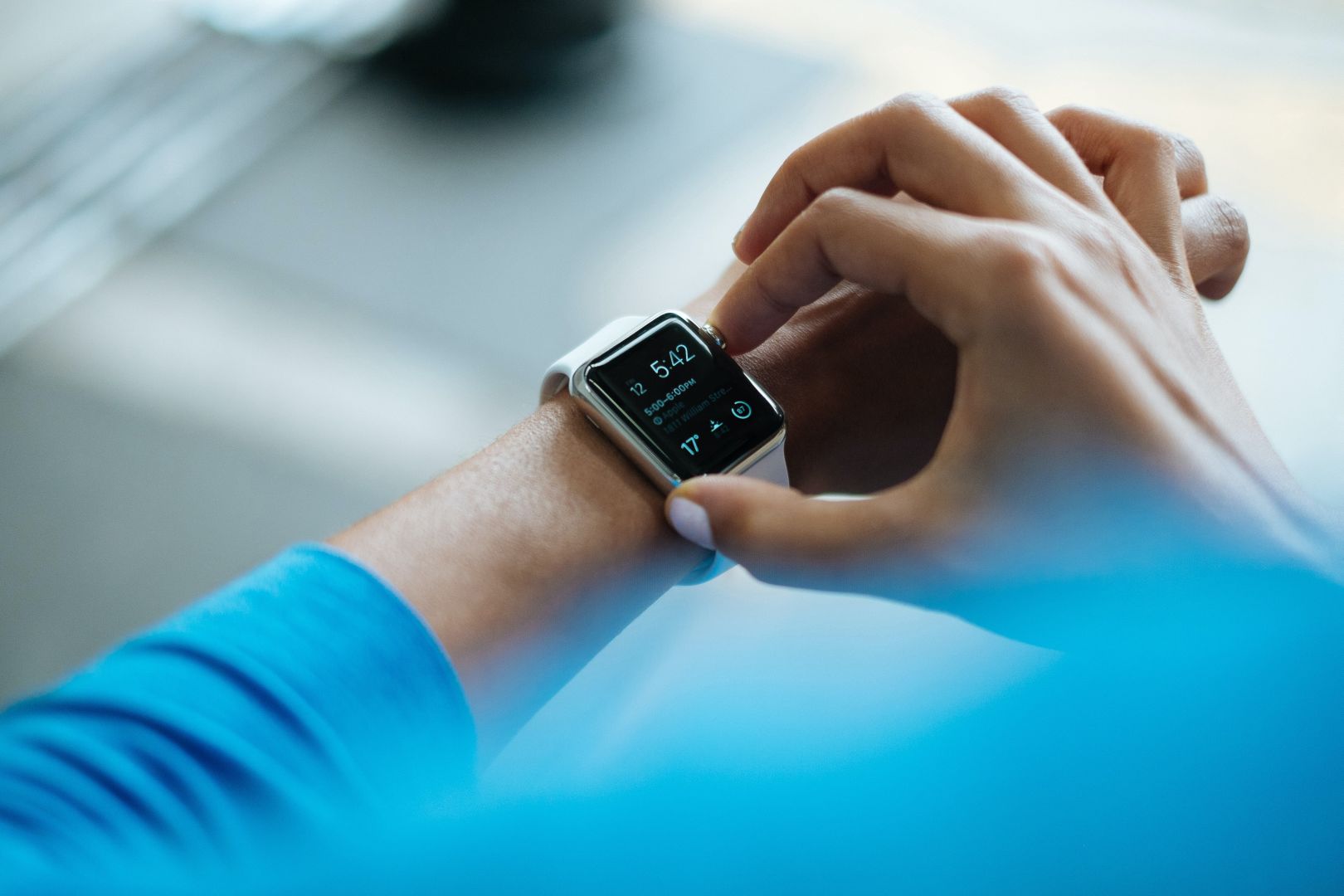
What to consider when buying a fitness smartwatch
A very crucial criterion for buying a fitness smartwatch is its purpose. Here, the buyer must be clear about the activities for which he primarily wants to use the device. If it is more of a popular sport such as jogging or cycling, then there is a wider range of models that come into question than if he spends his free time with a less common discipline such as climbing, boxing or snowboarding.
Likewise, the prospective buyer has to decide how important an integrated GPS module is to him. If they plan to use the wearable primarily for fitness training in the gym, it will make less sense for them than if they regularly ride new routes with their mountain bike and want to visualize and evaluate them afterwards.
For many, sport also includes the right music to provide additional motivation. If the fitness smartwatch is to offer the option of storing favorite tracks in an internal memory and playing them during training, this criterion should also be considered before buying a fitness smartwatch.
Sufficient attention should also be paid to the battery. Those who find it too much of a nuisance to connect their device to the power outlet at regular intervals will probably feel more attracted to models with a classic battery. The current trend indeed seems to go towards button cells, because this saves frequent charging processes and the battery only needs to be replaced every six months or so instead.
The last criteria determines the selection of a suitable device: It is important to clarify which smartphone operating system the fitness smartwatch should work with. Not every device can work with every cell phone. Occasionally there are restrictions – sometimes with Android, sometimes with iOS. Anyone who really wants to rely on the full performance of a fitness smartwatch should consider this point in any case.
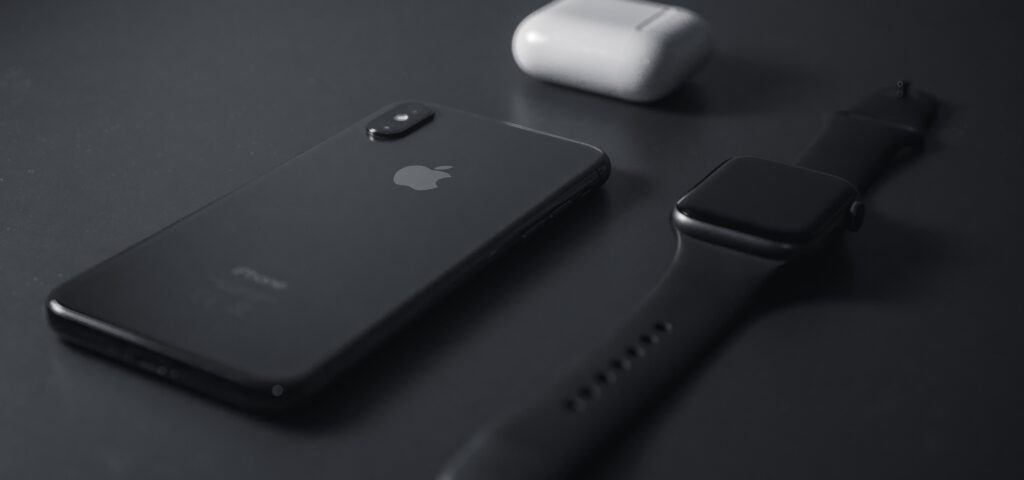
The best fitness smartwatches
Anyone who decides to purchase a fitness smartwatch probably does so for two main motivations: On the one hand, they practice one or more sports in a serious manner and expect the wearable to provide them with a whole range of data and evaluation options that are important. On the other hand, they also don’t want to do sports without a classic watch on his wrist. While one of the key features of a fitness wristband is that it looks discreet and can also be seen as kind of fashion accessory, a fitness smartwatch hardly differs from an ordinary timepiece at first glance.
Only a closer look reveals the digital display, which shows the time in a conventional way and has the collected fitness and health data at hand when navigating through the menu. In addition, a fitness smartwatch can also fulfill the most important tasks of a smartwatch. In the meantime, it can be expected from such a device that it immediately informs its owner when someone calls him on his smartphone or sends him a message.
Likewise, navigation can be resorted to since the prerequisites have been created with Google search and a GPS function that is often available. Speaking of search: Of course, many fitness smartwatches now already offer the option to search for content and information on the web via voice control.
It is also very useful for sports activities if the music playing on the smartphone can be controlled via the fitness smartwatch. Especially when it comes to activities like jogging, cycling or training in the gym, it is rather inconvenient to constantly get the phone out of your pocket to jump to the next or previous track. A fitness watch also offers such enjoyable extras and facilitates its user’s workout in many ways – from the recorded data to the daily portion of motivation and smartwatch extras.
The question of the best fitness smartwatch is not quite as easy to answer, since – as with any other type of wearables – it depends very much on the individual. One athlete is interested in very special functions that are at best sport-specific. Another user may place more value on looks: Some fitness smartwatches, such as those from the manufacturer Garmin, even come in a business look, making them perfect for everyday business use and giving the appearance of a luxury watch. How to find the best fitness smartwatch for the individual and which devices are far ahead, the editors of smartwatch-fans.com let you know on this page.

Differences between a fitness smartwatch and a fitness wristband
First it was simple pedometers, then running watches and some time later an almost exploding market for fitness bracelets and fitness smartwatches has developed. The main difference between an ordinary tracker and a fitness watch is obvious. First of all, a watch is able to do more thanks to a display and more extensive hardware. The display is also usually colorful and can therefore offer significantly more display options. This is also necessary because these wearables can collect even more data and information about the owner’s activities.
Moreover, it is not without reason that we speak of a watch, since its appearance, depending on the design, also makes it look like a conventional timepiece. Ultimately, this also means that a whole bundle of smartwatch functions can be expected. All in all, fitness smartwatches are complex and helpful companions for everyday life, which can replace the personal trainer under certain circumstances, since they always provide an overview of physical fitness and the state of health in addition to motivating functions.
While a fitness wristband also now collects a lot of useful data in many respects, this can be evaluated via an associated app via smartphone, tablet or PC. The display of the fitness smartwatch, on the other hand, makes it possible to call up a lot of information directly on the wrist – and even many additional analyses via an app.
Due to all these extras compared to a fitness wristband, it is therefore the logical consequence that a fitness smartwatch is to be classified higher in price. Especially if you are planning a purchase that is in the three-digit range, you want to be clear in advance exactly what the best fitness smartwatch is for you.
Finding the best fitness smartwatch – what to consider
As already mentioned, the question of the best fitness smartwatch can only be answered individually. For example, someone who regularly plays golf in his spare time will not be very happy with a fitness watch for runners. After all, they will miss out on features like extensive maps of golf courses, which another wearable could offer.
Fitness watch specifically for one sport or all-round talent?
Accordingly, it should first be clarified for which sport the device is primarily intended or which functions the user expects from it. The tasks that the respective fitness smartwatch fulfills can be found in the product description. There are now more and more wearables with automatic activity recognition. One example is the Swiss manufacturer Garmin, which has developed the so-called Move IQ technology.
Here, the trackers already recognize independently when the user rides a bike, runs, does weight training, goes swimming and much more. Such extras are also very helpful. Provided that the personally favored sport is supported, this makes the purchase decision easier. Those who are active in a variety of ways and thus practice several sports, may also be interested in such fitness smartwatches, because they are designed for a whole range of disciplines.
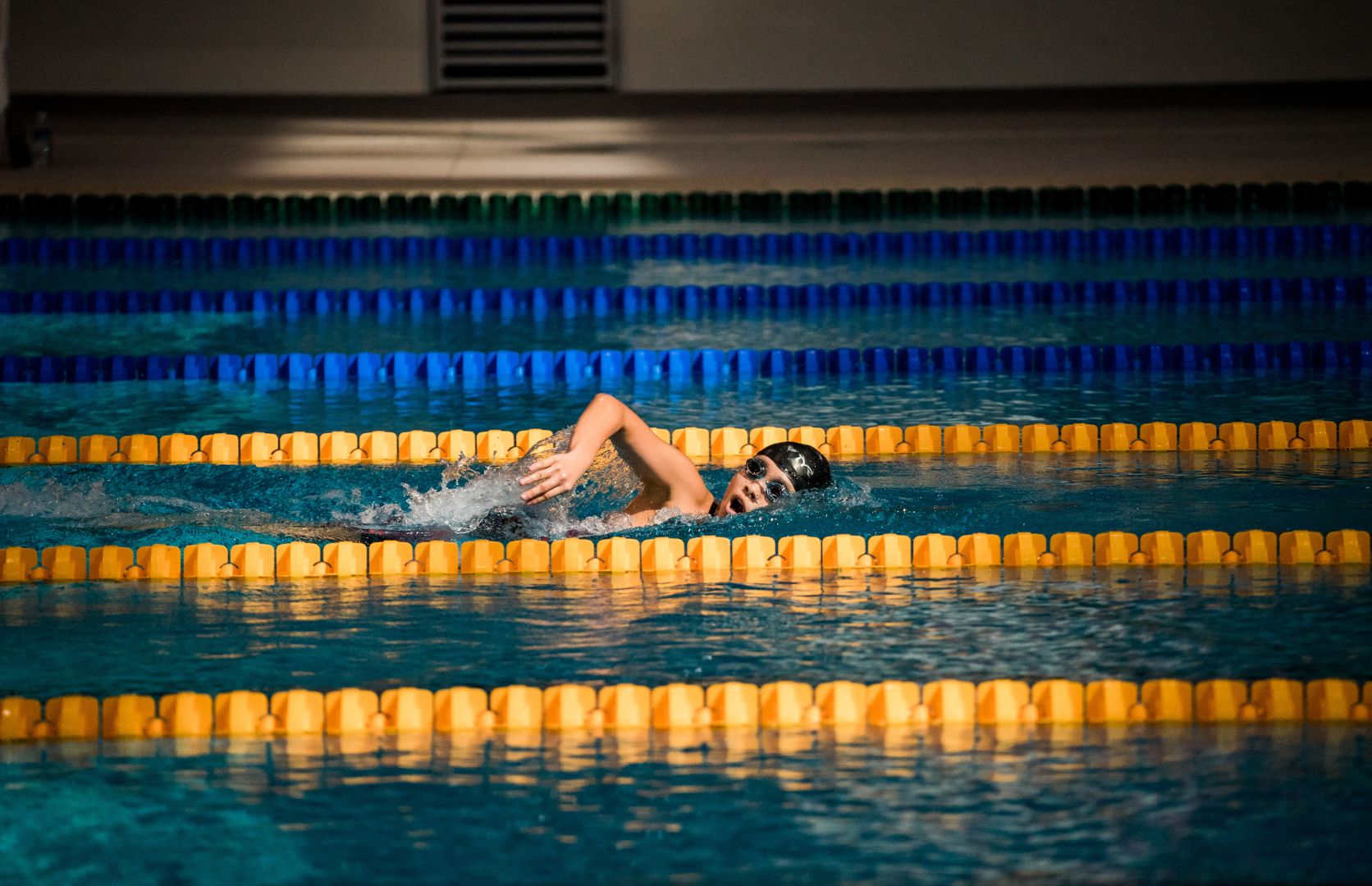
Material and wearing comfort of a fitness smartwatch
Also to be considered in the selection process is the nature of the device. While some fitness smartwatches are only splash-proof, others are suitable for swimming and even diving. The material used also falls under the aspect of the condition. Especially during intensive sports activities, it is even better if the wearable can be cleaned easily.
Replaceable wristbands are also a pleasant extra: They can be exchanged in a few steps without the need for tools. For example, a silicone wristband intended for sports could be replaced with a leather wristband that is more suitable for everyday use. Wearing comfort is also an important criterion to consider. Even though there is a lot of hardware in such a small device, it should not be too heavy. After all, it should not be in the way during sports itself, and those who want to have their sleep monitored with it at night will ideally not want to feel the device on their wrist at all.
Compatibility of the fitness smartwatch
Although the leading manufacturers on the market for fitness wearables such as Fitbit, Garmin, Polar, TomTom or Misfit offer unrestricted compatibility, this question should still be given attention in advance.
All that needs to be checked here is whether the fitness watch connects smoothly with the operating system installed on the smartphone or tablet. Thus, it can be the case with rather unknown manufacturers that they cannot be paired with every software in the form of iOS, Android and Windows without restrictions.
From this point of view, you can also take a look at the manufacturer’s matching app. As a rule, every brand offers its own application that can be used to analyze and display the measured data – from the number of steps to the calories burned and the maximum training heart rate. An interesting aspect is which other apps can be synchronized with it.
For example, it is conceivable that a user already tracks his calorie intake via an application by entering the food he eats every day there. It is ideal if this information can be linked to their activity data. A wide range of compatible apps can be offered by the U.S. manufacturer Fitbit, among others, whose application is in exchange with around 30 others.
If you are still looking for additional motivation, you can also take a look at the exchange the app offers in communities. Garmin, Fitbit, Polar and a number of other manufacturers enable a kind of competition between friends and acquaintances who own a fitness tracker from their range. This can create small challenges, who moves more or the greater amount of calories can tumble and much more.

Functions and extras of the fitness smartwatch
Display the time, count steps and determine the corresponding distance, calculate calories burned and record sleep – these are typical functions that can also be expected from a fitness wristband. If this is enough for you, you don’t necessarily have to get a fitness smartwatch. You will probably do so because you expect even more, you want to own a tracker that also serves as a smartwatch, or because you want to be taken by the hand by the device in the truest sense of the word to become more athletic and healthier.
Of course, the accuracy of the data collected also plays an important role. From a fitness wristband in the low two-digit price range, not as exact measurement data can be expected as from a complex device at a much higher value. An integrated GPS module in particular is helpful for recording the data of movement in the open air as correctly as possible. At the same time, it can also make use of map material and thus facilitate navigation.
The measurement of the heart rate is an important parameter not only for endurance athletes. Bulky heart rate monitors coupled with a chest strap are a thing of the past. Instead, an optical sensor can also provide this data. This is attached to the underside of the fitness smartwatch and measures the light reflections from the skin. This changes depending on the amount of current blood flow.
This tells athletes when they are moving within or outside their own personal optimal heart rate zone. For beginners, this gives a clue to the right training intensity, and for more experienced athletes, it provides an important overview. As soon as the athlete is no longer within this intensity range, the wearable warns him or her with a signal tone or vibration alarm.
The aforementioned automatic motion detection is an equally helpful feature that many fitness smartwatch owners would not want to do without. Independent lap counting while running or swimming can be a similarly useful feature that makes it easier for athletes to record their workouts.
Smartwatch features such as notification signals, reminders or access to the smartphone calendar can also be included in the criteria when looking for the best fitness smartwatch.
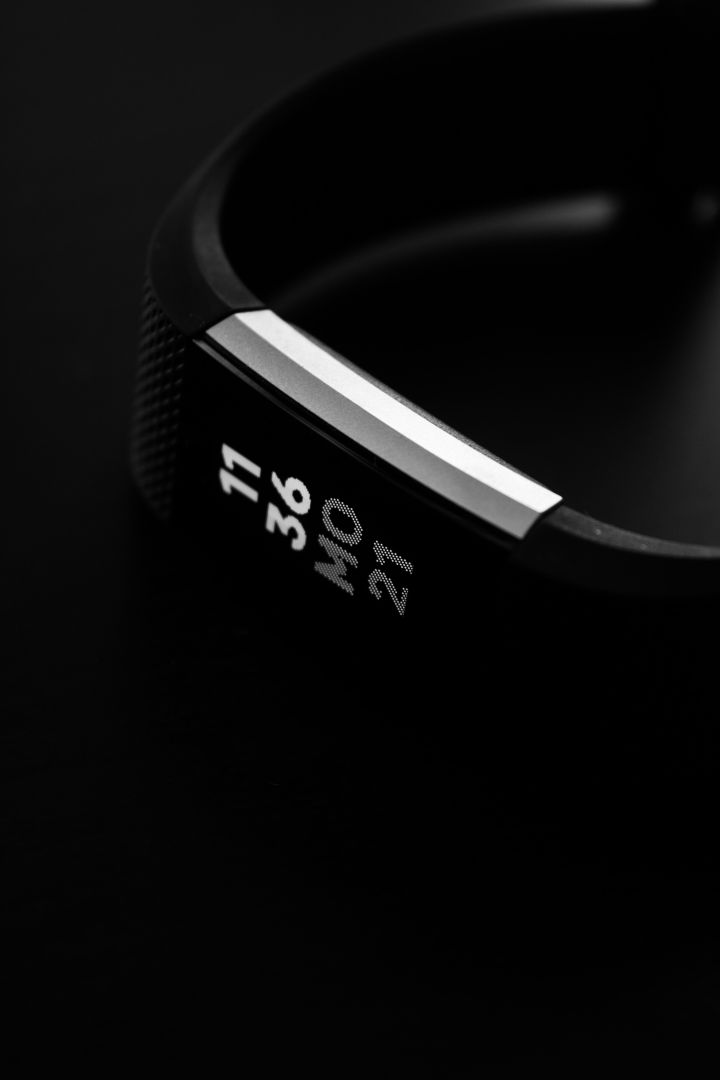
The menu navigation is also not to be neglected. Because it is clear: Where many functions have been integrated, there is quickly the danger that it becomes too confusing. Buyers who are inexperienced in using a fitness watch will find it easier to get started if they buy a device that can be controlled as intuitively as possible.
Finally, a word about battery performance: If you use many features of a device, you should keep in mind that this also costs a lot of energy. Especially when the GPS function is used permanently, for example, the time until the next recharge is reduced. In this respect, you should also take a look at the battery life – or whether a battery has been integrated instead that lasts much longer until it has to be replaced.
The latest fitness smartwatch
Most people still remember when conventional cell phones were replaced piece by piece by smartphones a few years ago. In the meantime, the majority of us have such a cell phone and can no longer imagine life without the devices with their countless possibilities. Fitness smartwatches are already undergoing such a development and are gaining more and more popularity. The associated boom ensures regular new releases, about which you will always be kept up to date on this overview.
The term wearables covers all forms of electronics that are worn on the body – from special glasses to smartwatches and trackers of all kinds. Fitness wristbands and fitness smartwatch play a special role here. This has to do with the fact that there is a general tendency to be physically active and to live a sporty and healthy life. In this endeavor, these types of wearables can often help as motivators and digital personal trainers.
An American College of Sports Medicine (ACSM) survey is conducted annually among employees who work in health and fitness. Back in 2016, they clearly felt that fitness smartwatches and fitness wristbands ranked first among the top 20 sports trends for the coming years. Respondents to the survey indicated that many people are developing a palpable interest in fitness-related technologies. Another indication is that Fitbit, a fitness smartwatch and fitness wristband manufacturer, is the world’s most successful player in the wearable market.

These devices are therefore on the rise, and potential buyers are not afraid to spend a bit more money when it comes to purchasing a suitable tracker. In addition to a wider range of functions, wristbands and watches also generally differ in price. Fitness wristbands are somewhat less expensive because they are not quite as complex and therefore cannot perform quite as many tasks as a fitness smartwatch.
Fitness watches are basically a combination of smartwatch and sports wearable. At first glance, some of them don’t even look like a device for physical activity, but rather like a very ordinary timepiece. This makes fitness smartwatches an everyday companion for every situation. The user does not have to do without the capabilities of a smartwatch, because most of these wearables also have them on board. Thus, the user also gets information about incoming notifications on his smartphone, can check his schedule and often also use the Google search function via voice control.
And there is also a whole range of important sports functions. Pedometer, determination of burned calories and monitoring of sleep are standards that a fitness wristband can also offer. The special feature of fitness watches is found in the extras that go beyond these standards. This starts with the fact that the collected data can be read and analyzed via the large, usually colorful display. Then you can also rely on many aids such as a GPS module, personal training programs or automatic recognition of the type of sport being performed.
More and more people are therefore turning to fitness smartwatches when buying wearables, because they offer the widest possible range of functions and can be used permanently. It is therefore not surprising that there is now a lot of hype as soon as new fitness watches are announced or are about to be presented. The editors of this website will keep you up to date on the latest models on the market in this overview.
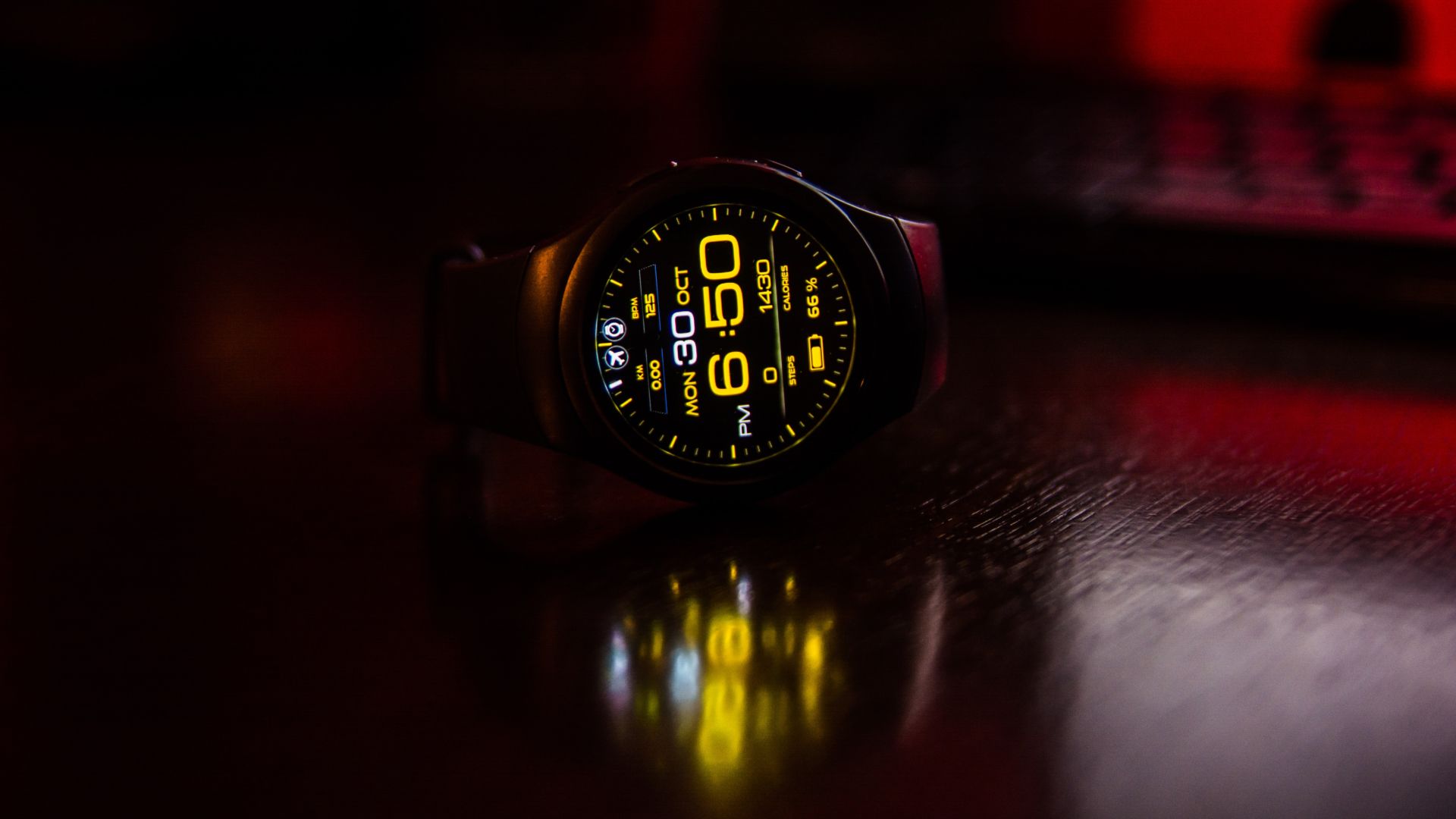
Presentation of new fitness watches at trade shows and manufacturer events
Ideal occasions to present a new fitness smartwatch or other wearable are primarily electronics trade shows such as the Internationale Funkausstellung (IFA) in Berlin or CeBIT in Hanover for Europeans. Even sporting goods manufacturers such as Nike or New Balance have positioned themselves in the market.
The general consensus of current electronics trade shows coincides with studies by the American College of Sports Medicine: the industry is already experiencing a major boom that will continue in the coming years. Not least because wearables can be used in a variety of ways: Areas such as medicine or logistics are claiming this technology, further fueling the trend.
But not only extraordinary products are presented, but also the successor models of already well-known fitness smartwatches and other wearables. These trade shows give manufacturers the attention they need for their devices, creating the perfect platform. Typically, new reports keep gathering around the announced devices in the run-up. Sometimes it remains rumors, sometimes the news comes true. Consequently, the prevailing trend also increases interest in new wearables.
Another way to present the latest fitness watches and similar products to the public before the market launch is through events specially scheduled by the companies, to which they invite media representatives. Such an exclusive event always provides an exclusive setting to focus on the new product.
The special feature of new fitness smartwatches
Fitness watches combine the best of two worlds. On the one hand, there is the area of smartwatches and, on the other, fitness wristbands. The fitness smartwatch combines both areas and thus functions both as a personal everyday assistant and as a coach that records and analyzes almost every form of training. New releases in particular are always one step ahead: manufacturers expand the capabilities of these wearables by adding new sports modes or incorporating additional useful features for activities away from sports.
Add to that the fact that the new fitness smartwatches are getting a fresh coat of paint in terms of design. This means that they appear in an even more refined look or are once again a touch more up-to-date in terms of fashion. Other innovations, such as flatter yet more powerful batteries, can also have an impact on the overall concept and allow developers to make the models even slimmer.
Existing capabilities of fitness smartwatches are refining as experience shows. For example, it can be noted that GPS technology works more accurately or that heart rate measurement can be measured even more precisely. All these aspects speak in favor of paying due attention to new releases.

Why buying a new fitness watch is worthwhile
Of course, if you want to buy one of the latest fitness watches, you will undoubtedly have to pay more than if you buy a model that is no longer as up-to-date. Regardless of whether it’s wearables or other consumer electronics: As soon as the release of a successor is imminent, the price of the still current model drops. So while some use the market launch of the latest technology to secure an older device at a reduced price, others primarily have the demand for quality in mind.
It can be assumed that a newly launched product has been improved and further developed by the manufacturer. In terms of a fitness smartwatch, this could be a longer battery life, greater wearing comfort or an expanded range of functions, for example. The reactions of buyers and technology experts provide companies with a corresponding mood picture that shows them how well their products are actually received.
Added to this is the fact that technical progress never stands still and always makes further options possible. One example is the integration of an eSIM card in a smartwatch or a fitness watch. While there were still difficulties in reconciling energy consumption and telecommunications some time ago, the tide has now turned and some manufacturers already offer this extra. In the future, this feature is likely to become more and more standard.
Improved compatibility with the operating systems for optimized exchange between fitness smartwatch and smartphone would be another reason why it is worth waiting for more advanced, new wearables. In addition, the hardware is getting lighter and thinner – while still being able to offer higher performance. Who doesn’t remember the clunky running watches with heart rate belts that are now a thing of the past?
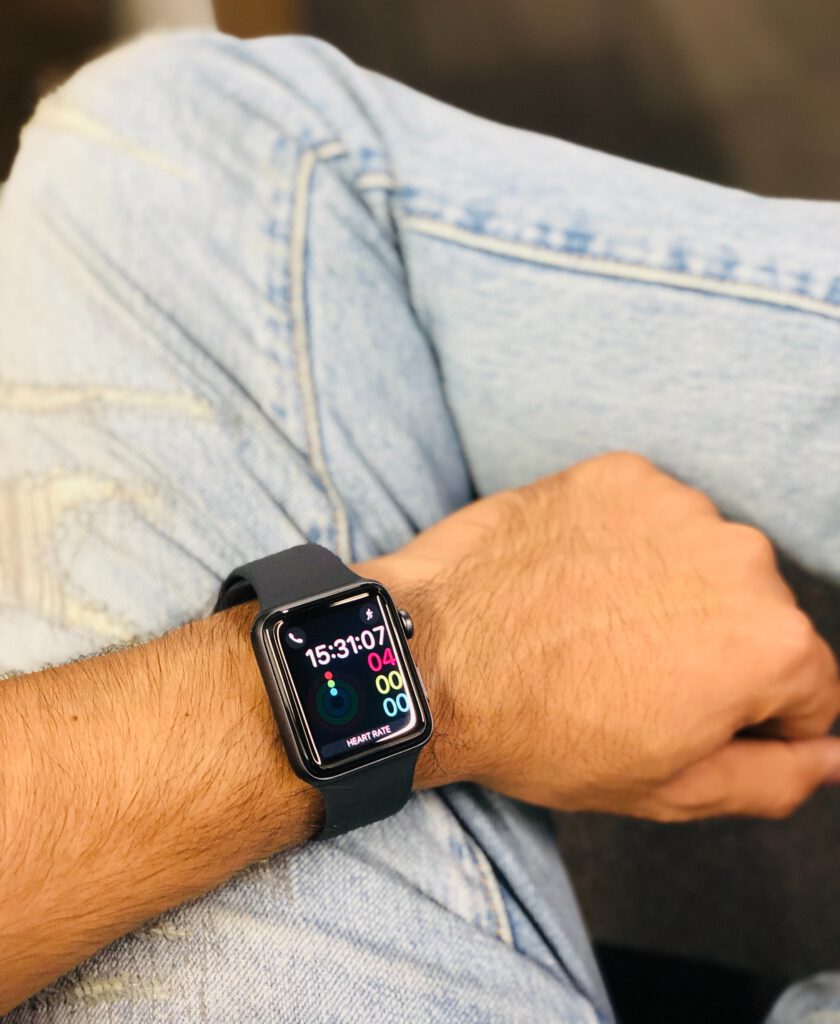
Today’s wearables are becoming more and more powerful, and that despite hardware that is visibly becoming thinner. In view of the many functions that some fitness smartwatches have to offer, it is surprising that they are so lightweight. The more the hardware is refined, the less space it takes up when installed in the wearable, which also has a positive effect on the wearing comfort.
Ultimately, every buyer has to decide for themselves whether they want one of the latest fitness watches or prefer to buy a cheaper device that has been on the market for a while. In any case, the purchase of a fitness smartwatch is a long-term investment, which therefore needs to be particularly well considered. Those who want to enhance their everyday life and sporting activities with this technology should feel comfortable with their purchase decision and the product as such.
The most popular fitness smartwatch
A fitness watch is more than just a little helper that provides an overview of steps walked and calories burned. Rather, it is a wearable that combines sports and everyday life. After all, these small computers are not only designed with a whole range of functions and measurement options for physical activity, but they also offer many things that a smartwatch can also score with.
In addition to an extensive analysis of movement data, it can also serve its user as an organizer on the wrist by giving him a signal when someone wants to contact him via the smartphone or when stored appointments can be retrieved. Seen in this light, a fitness smartwatch can do a lot and is therefore becoming increasingly popular. These complex wearables are trendy and a part of the fitness movement: More and more people want to be sporty and healthy at the same time and still look good.
Technical supporters in the form of fitness bracelets or fitness watches are proving helpful in this regard. On the one hand, they are a motivator that can encourage more movement and thus ensure that the metabolism stays on track. Through the recorded data of the activities, the athlete recognizes a development and whether he is on the right path to a fitter life.
In order to look for the suitable fitness smartwatch, it is of immense importance to determine one’s own demands and needs before choosing the device. In addition to a look at fitness watch reviews, which you can also find on this website, it also proves helpful to know which devices are particularly trendy. Fitness watches, which enjoy great popularity and thus a wide range of buyers, are characterized by mass suitability and versatility. In this, this website will keep you up to date on the most popular fitness wristbands at any given time.

The most popular brands for fitness smartwatches
There is no way around brands like Polar, Garmin, Fitbit, Suunto or TomTom when talking about the most popular fitness watches on the market. These are not only the most famous manufacturers, but at the same time the biggest. These companies are not only known to the die-hard connoisseurs of the industry – rather, they have made a name for themselves through the quality of their products. Consequently, these fitness smartwatches are the most sought after and ultimately purchased.
Fibtit: The manufacturer of the first hour
The number one position is held by Fitbit, a company based in San Francisco, USA. One of the main reasons for this position is that the founders were involved with wearable technology at a very early stage and thus have the relevant know-how. As early as 2007, when fitness trackers were not even on the horizon, they recognized that the technology was already at the necessary level to be used by athletes and amateur athletes.
With simple first pedometers, they were able to bring out more and more new products and develop them further. Today, Fitbit offers the widest portfolio of devices that can be found on the market. At the same time, the company is the leader when it comes to sales figures and accordingly, these fitness smartwatches are also among the most popular.
But Fitbit’s fitness watches have a lot more in store and are emblematic for this product category – not to mention the color display with different, selectable watch faces. An optical heart rate monitor, a built-in GPS, the recording of running distances covered, an accelerometer and other fitness functions are reliably fulfilled by these models.
Popular fitness watches from the far north: Polar and Suunto
You can already guess a little from the brand name where the manufacturer Polar has its origins. The company was founded in Finland more than 30 years ago. This gave rise to the business idea: during a ski tour, the idea came up to develop a heart rate monitor that could be used wirelessly. Today, Polar has everything to offer in terms of products that can be expected from a brand in the field of fitness wearables. Simple fitness wristbands are just as much a part of the range as various sensors and a networked body scale.
The range of fitness smartwatches at Polar is particularly large. In addition to running and multisport computers, the range also includes various GPS and running watches, which are especially aimed at ambitious athletes and competitive athletes. Paired with a mostly very low weight and a modern as well as sporty design, Polar fitness watches enjoy great popularity. In addition to a comprehensive analysis of all training data, many models also fulfill the typical functions of a smartwatch. Accordingly, they notify their wearer when messages and calls arrive on a paired cell phone. Accessing maps is also child’s play thanks to the built-in GPS sensors.

Also from Finland is Suunto, which is equally one of the main companies launching popular fitness watches. The wearables often can’t get any more versatile than this. Apart from the basic tracking functions like permanently recording steps and the amount of calories burned, they are suitable for a wide-ranging bundle of different sports. More than a hundred disciplines find their support on some Suunto fitness smartwatches, and that’s a more than respectable figure.
Thanks to the sensors installed for this and a very robust workmanship, both conventional endurance training, as well as demanding outdoor units or the favorite winter sports can be completed. The fitness watches, which typically come in a unisex design, even don’t shy away from going into the water and thus count women and men among their target group.
Garmin: The GPS expert par excellence
Fitness smartwatches are often equipped with a GPS module. Garmin, founded in 1989 and headquartered in Kansas and Schaffhausen, Switzerland, should be considered an expert in this product category. After all, the technology group can claim to be the world’s leading expert for GPS systems. Garmin initially became known for its navigation systems, but now also attaches great importance to wearables – and especially to fitness smartwatches.
Garmin is a brand that has one of the largest product ranges of fitness watches. The developers rely on both angular and round displays. While especially the models with a square display are intended for sports, other fitness smartwatches can convince with a very suitable design for everyday use. Especially the models in the upper price segment from Garmin do not necessarily give the impression that this is a digital coach for sports, but rather a noble smartwatch or even a luxury watch.
Design, functions, battery life, price – what makes a fitness watch popular
One thing right up front: there is no secret recipe for a popular fitness smartwatch. However, there are a few features that have proven to be popular with users of such wearables. As befits a fitness watch, it should be a reliable companion during sporting activity that accurately records the relevant data. In addition, such a device is not exclusively intended for the hobby and leisure sector. It also replaces a conventional watch or even a smartwatch. To meet this requirement, it should have a design that is as suitable for everyday use as possible. It does not have to be obvious at first glance that it is a wearable for sports. Instead, the watch may also appear as a typical timepiece at work, when meeting friends and similar comparable occasions.
But why only resort to a watch when smartwatches are also available? And therefore, a fitness smartwatch additionally fulfills many common functions of a smartwatch. This means that it provides access to calendar entries, reminds you of appointments, can be used as an alarm clock and, of course, also informs you about everything that happens on your smartphone – from calls and text messages to news from social networks, it is allowed to give its owner an unobtrusive hint.
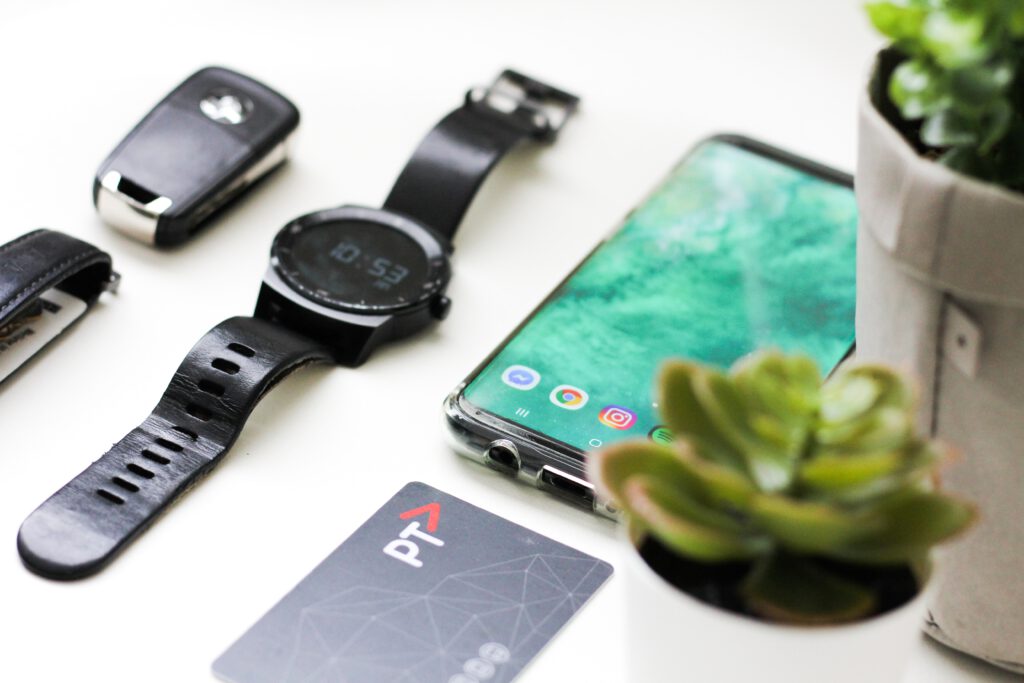
The looks and smartwatch functions are now out of the way, but the most important things are not yet. It’s not for nothing that the word “fitness” is in front of the name. According to this, the watch should primarily improve its owner’s fitness and accompany him during his activities. It is up to the user to decide which activities he wants to do, how seriously he wants to do them and which features he does not want to miss at any price. Many fitness smartwatches now offer extras specifically for certain disciplines: Maps of golf courses, the independent recognition of swum lanes or the motivation for new running routes are no longer uncommon.
GPS, pulse measurement and the comprehensive analysis of recorded activity data right on the wrist are a few of the frequently occurring functions of popular fitness watches. In this respect, all of these features should be expected for a sought-after model. The more the wearable can do, the higher its energy consumption – which is why the longest possible battery runtimes can score points.
User comfort also plays a role in many respects. If the device is lightweight, for example, it will be taken off less often and can therefore accompany the owner on more occasions. It is important, especially for first-time buyers of a fitness smartwatch, that it is easy to navigate. Intuitive operation makes it easier to navigate through the extensive menu and the functions it contains.
Last but not least, convertibility is also a decisive factor in whether a fitness watch is popular or not. If it can be transformed from a sporty wearable into a smartwatch suitable for everyday use in just a few steps – for example, by replacing a wristband – this underlines the versatility of these devices.